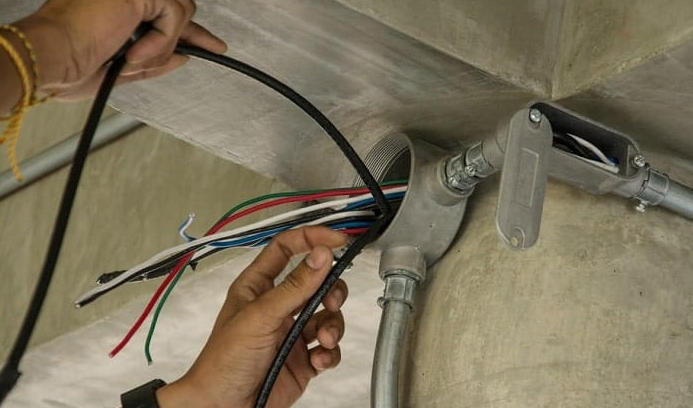
Choosing the right electrical fittings is non-negotiable for both safety and functionality in any electrical setup. Whether you’re upgrading a residential system or designing a commercial project, understanding the different types of fittings and their applications is key to building compliant, reliable electrical infrastructure. Let’s dive into the fundamentals and explore the most common fittings every installer should know.
Electrical fittings are components designed to connect, secure, and protect electrical wiring across various installations. They work together to create safe, efficient electrical connections while managing current flow and mitigating hazards like short circuits.
These essential parts organize wiring within walls, ceilings, and structures, ensuring long-term integrity of electrical systems. Proper selection and installation of fittings not only keep systems compliant with industry regulations but also prevent potential electrical accidents.

Conduits are protective tubes that shield electrical wires from external damage and interference. Typically made from steel, aluminum, or PVC, they form a secure pathway for wiring in both residential and industrial settings.
Conduit fittings – including elbows, couplings, and connectors – join conduits to electrical boxes, enclosures, or other conduits. They enable turns and extensions without exposing wires, maintaining the system’s protective barrier.
Junction boxes act as protective enclosures for wire connections, providing space for wires to branch in multiple directions. Available in various sizes and materials, they’re tailored to specific environments and load requirements.
By keeping connections secure and covered, these boxes play a critical role in preventing short circuits and electrical fires. They’re essential for organizing wiring in complex installations where multiple wires need to intersect.
Similar to junction boxes, electrical boxes serve as central hubs for wires. They house switches, outlets, and other devices while providing a safe environment for wire connections.
These boxes can be flush-mounted (recessed into walls) or surface-mounted, depending on installation needs and aesthetic preferences. Their robust design protects both connections and users from electrical hazards.
Cable trays are structural supports for insulated cables used in power distribution and communication systems. Common in industrial and commercial buildings, they excel at managing open wiring with both protection and accessibility.
Popular types include ladder, solid-bottom, trough, and channel trays – each offering different levels of cable protection and ease of maintenance. Properly installed cable trays reduce clutter and simplify future upgrades.
Flexible conduits require specialized fittings that accommodate their adaptability. These fittings, often made of brass or plastic, include straight and angled connectors that securely attach flexible conduits to electrical boxes and devices.
They’re ideal for spaces where rigid conduits can’t be used due to structural barriers or tight corners, maintaining protection without compromising on installation flexibility.
For outdoor or moist environments, weatherproof boxes and covers are indispensable. Designed to withstand rain, snow, humidity, and temperature fluctuations, they keep electrical components dry and operational.
Common applications include exterior lighting, outdoor power outlets, and irrigation system controls. Their sealed design prevents water intrusion and extends the lifespan of electrical devices.
Grounding fittings are a safety cornerstone in any electrical system. They provide a dedicated path for fault current to dissipate into the earth during a short circuit, preventing electric shock and fire risks.
These fittings ensure effective connection of grounding wires to the system’s grounding infrastructure, complying with safety regulations and protecting both equipment and users.
In industrial settings with flammable gases or dust, explosion-proof fittings are critical. Constructed from heavy-duty materials, they contain sparks or flames that might occur within the system, preventing ignition of the surrounding atmosphere.
Meeting strict safety standards – including pressure resistance requirements – these fittings are essential for hazardous locations like refineries, chemical plants, and grain silos.
Cable glands (also known as cord grips or strain relief fittings) secure and seal cable ends where they enter equipment or enclosures. They provide strain relief, preventing cables from being pulled or twisted, and block dust, moisture, and contaminants.
Available in materials like plastic, brass, and stainless steel, they accommodate different cable sizes and applications – from residential wiring to industrial machinery. Split versions even allow installation on pre-terminated cables without removing connectors.
Wire connectors and terminals facilitate reliable connections between wires and devices. Types include butt connectors, ring terminals, and spade terminals, each designed for specific circuit requirements.
These fittings ensure secure electrical contact, reducing resistance and preventing overheating. Properly selected terminals and connectors are vital for maintaining circuit integrity over time.
Cable ties are versatile tools for bundling and securing wires, keeping installations neat and organized. Available in nylon, stainless steel, and various lengths, they simplify maintenance and inspection by preventing loose wires.
When paired with conduit hangers and mounting brackets, they create structured wiring systems that minimize the risk of tangling or accidental damage.
Selecting fittings requires considering three key factors: environment (indoor/outdoor, hazardous, moist), load requirements, and compliance with local electrical codes. Always match fittings to the cable type, voltage rating, and installation conditions.
For example, use corrosion-resistant materials in humid areas, prioritize explosion-proof designs in hazardous locations, and ensure grounding fittings meet safety standards for fault current handling. Consulting with a certified electrician can help confirm the best choices for your specific project.
Whether you’re a professional installer or a DIY enthusiast, investing in quality electrical fittings pays off in safety, reliability, and long-term performance. By understanding the role of each component, you can build electrical systems that stand the test of time.